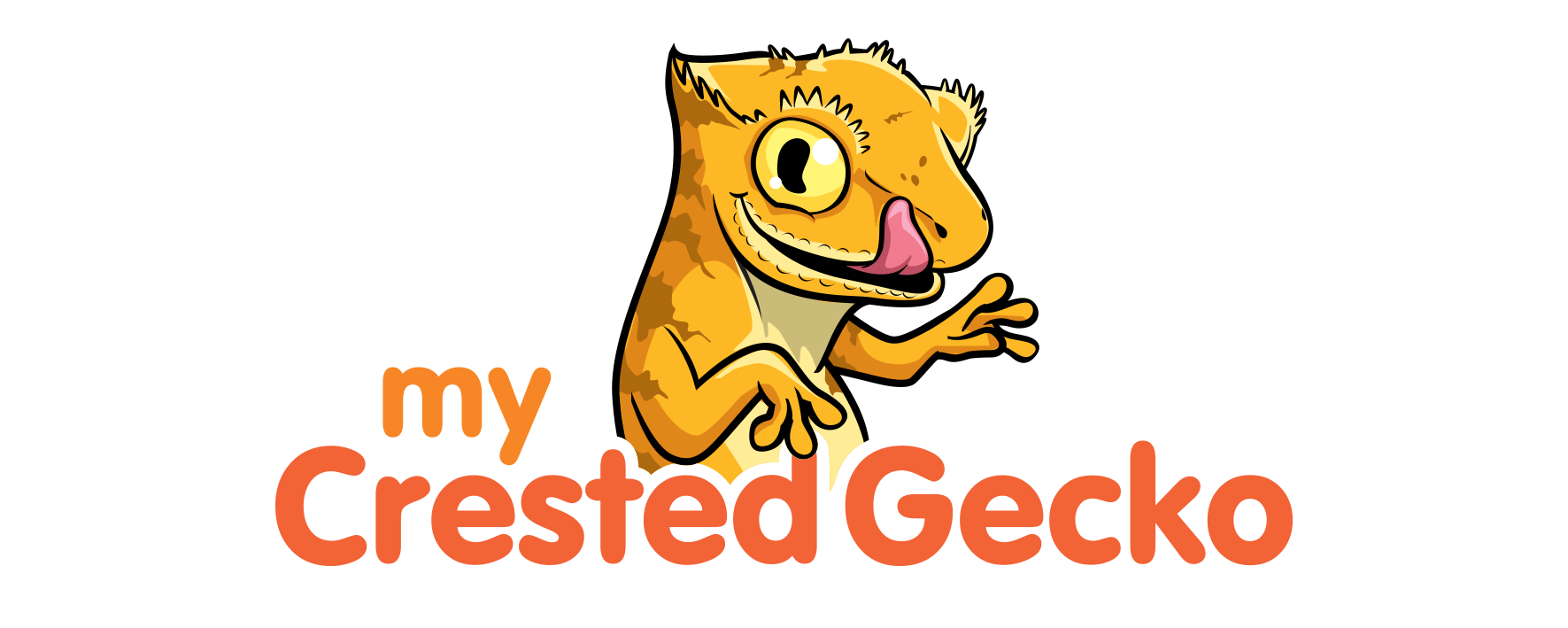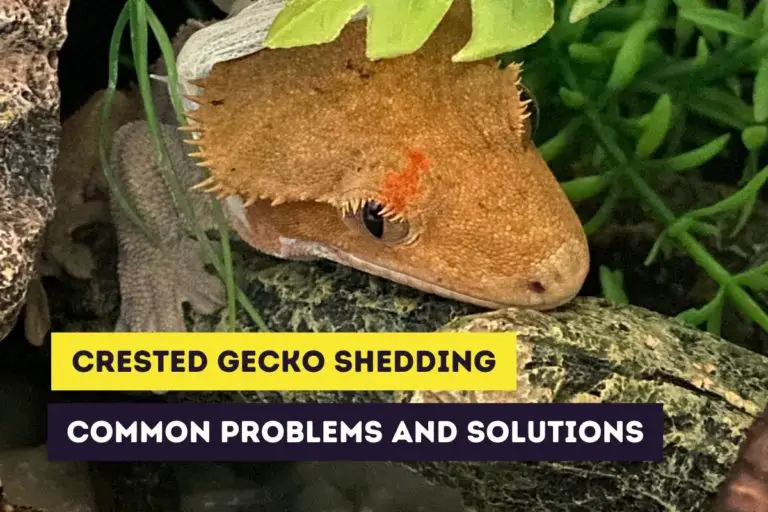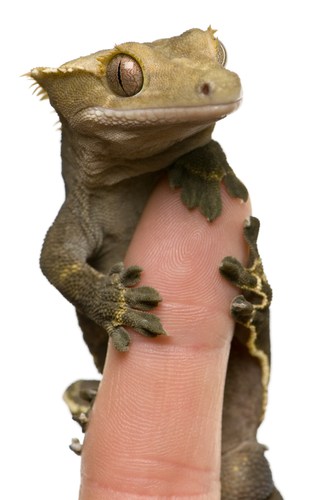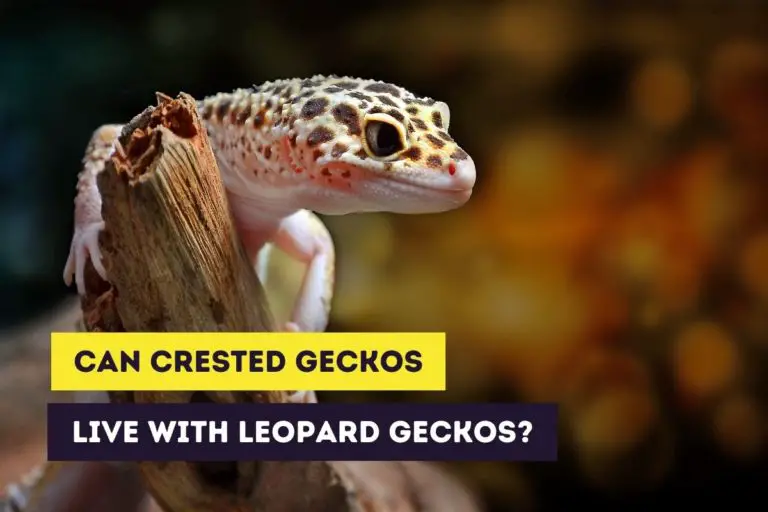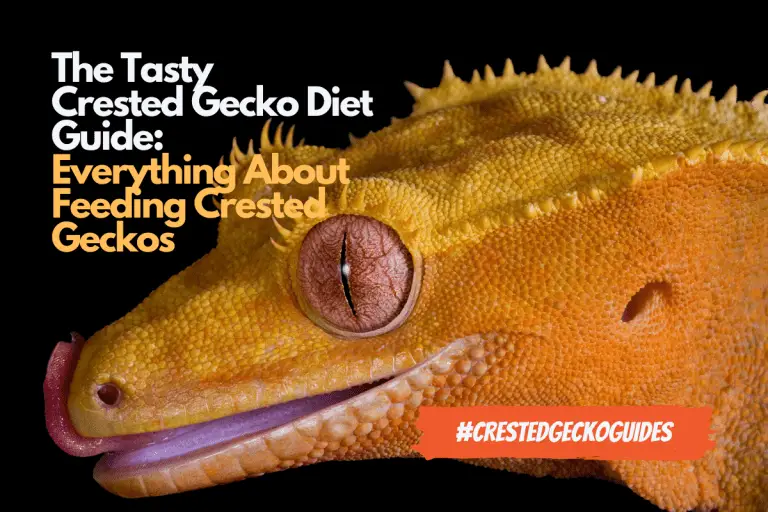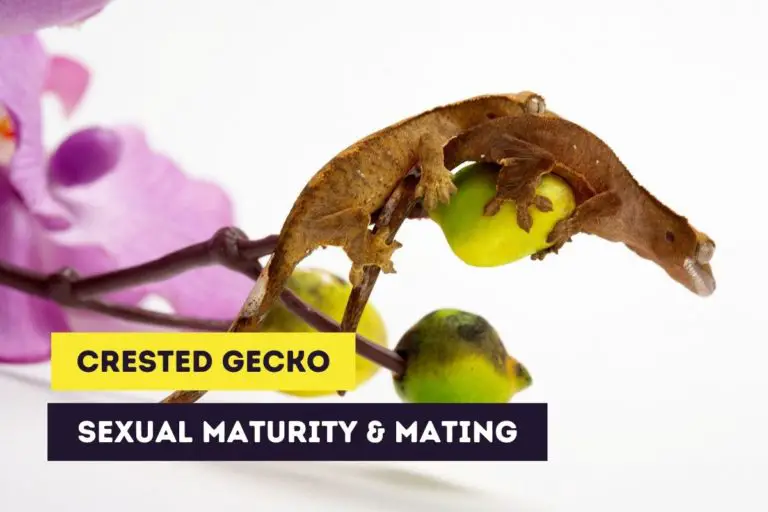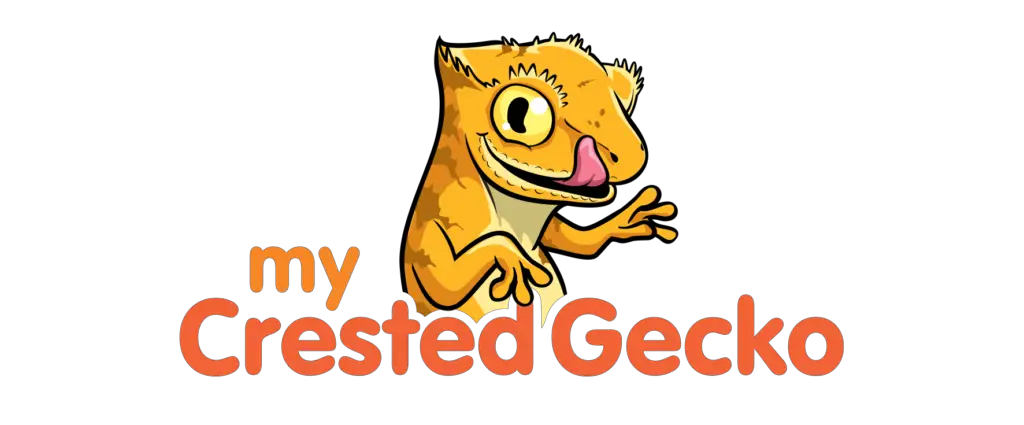Cricket Feeding Guide: How to Feed Crickets to Your Crested Gecko?
Crested geckos eat a lot of insects and fruits in the wild but most of the cresties in captivity are fed commercial diets and the occasional cricket. Let’s start with an important note. While a lot – if not all- crested geckos will eat crickets with a lot of taste, it’s not a good idea to base a diet solely on crickets. You’ll want to give your crestie a balanced diet that contains crickets but with moderation.
Most new gecko owners don’t know exactly how to feed crickets to their cresties. Of course, there’s a lot of talk about gut-loading, dusting and the size of the cricket but I didn’t find a lot of guides that explained in detail how to feed crickets to a crested gecko.
In this guide, you’ll be learning about crickets, how to gut-load and dust, and how to feed the crickets to your crested gecko. In short, feeding crickets to a crested gecko isn’t rocket science but it isn’t as simple as buying crickets and throwing them in the terrarium. There’s a little bit more to it.
This site contains affiliate links to products we recommend and use ourselves. We may receive a commission for purchases that you make through these links. If you’re interested in learning more about our affiliate links, please visit our (affiliate) disclaimer.
If you’re interested in stickers or other products of crested geckos, you can always visit our Etsy Shop, which is called Artful Animalia. We currently only send stickers in the United States. If you’re interested in certain crested gecko-related products, don’t hesitate to contact us.
Cricket Basics
Types of feeder crickets
There is no one type of feeder cricket. In fact, there are a lot of different cricket types but only a few of them are used as feeder cricket. The ones that are often fed to crested geckos are:
- the common brown cricket (Acheta domesticus): also known as the house cricket. The brown cricket has a grayish or light brown color, has long antennae and even has wings. Brown crickets also are very capable jumpers with large jumping legs. Brown crickets are very popular in the feeding industry for pets, including reptiles like the crested gecko.
- the banded cricket (Gryllodes sigillatus): also known as the tropical house cricket, this cricket is smaller than the house cricket. The banded cricket has a light yellowish color and has two thick black bands. Banded crickets are more active than house crickets and have a longer lifespan. They also have lower chitin content which makes them more digestible.
Life cycle
The growth or life cycle of the cricket can be divided into three large stages:
- egg: crickets lay eggs and the eggs will take about two weeks to hatch after which nymphs will come out.
- nymph: nymphs will look like miniature versions of their adult versions but don’t have any wings. Nymphs are often fed upon by larger crickets and other insects. A nymph has an exoskeleton and will go through a process called molting. Molting happens up to 10 times and is a process where the nymph sheds its exoskeleton. After shedding a new exoskeleton is formed that is soft and white at first but will harden in a few hours. The nymph stage lasts about a month at which their wings will start to grow.
- adult: adult crickets will try to mate and reproduce. It’s in this stage of the life cycle that you will give the cricket to your crested gecko.
The entire life cycle of crickets is usually between 8 and 12 weeks (so 2 to 3 months). A lot will depend on their environment and a lot of different factors, including stress.
Cricket diet
Crickets are omnivores and eat both plants and animals. A cricket will eat what’s available to them and isn’t a picky eater. Crickets might even eat their own colony members when in a shortage of food. In the wild, crickets will eat rotting plants, leaves, fruits, insects or bugs, depending on the availability in their environment.
Buying Crickets
Price range
Crickets are really cheap to buy but you’ll often need to buy large amounts of crickets and a crested gecko will not eat a lot of crickets each month. The price of crickets depends on the number of crickets, the quality of food they’ve been fed and the size. Even then you can find price differences depending on the region you live in.
To give you a general idea of the money you’ll have to pay for crickets, you can find crickets starting from $5 for 100 crickets to $15 for 1000.
The price range of buying crickets in a local pet store is usually between $0.8 and $0.12 per cricket while online sellers can usually offer prices between $0.015 and $0.08 per cricket.
When you buy online, you’ll need to consider shipping costs which can add up to about the same or more as the cost of your crickets.
As you may notice, the price per cricket decreases when you buy more. If you know that one adult crested gecko can eat up to 6 crickets a week you’ll need approximately 25 crickets a month. Of course, if you choose to feed a commercial crested gecko diet and limit the number of crickets you feed, you won’t need that many crickets.
If you’re not entirely sure about the number of crickets you need, you can start with a small number and buy them at your local pet store where you can often buy smaller amounts.
Where to buy
Brown and banded rickets are widely available as feeder insects for reptiles, birds, and amphibians. So, you won’t have a lot of problems finding a seller of crickets.
When you don’t need a lot of crickets, you’re probably best buying the crickets from your local pet store. Most pet stores also sell crickets but are a bit pricier than online stores. You can also try finding crickets at fishing bait stores when your local pet store doesn’t have any crickets available.
Popular online sellers (shipment US):
Josh’s Frogs: an online seller that has a wide variety of insects including (already gut-loaded) crickets.
Fluker’s Farms: a seller of live crickets and crested gecko diets.
If you live in a region where it’s difficult to find crickets, you want to try online sellers. They can often provide great deals because they breed them on a large scale.
Preparing Crickets for Your Crested Gecko
Keeping crickets
When you buy crickets you usually get them in a small container. You want to keep the crickets in a large container with tall sides. This prevents the crickets from jumping out of the container. It’s also important that the sides are smooth so they can’t climb out.
Ideal container:
- secure screen lid
- smooth sides
- cardboard egg crates or toilet paper rolls used in container
You can buy such a container for $10 to $20 or you can build your own container out of DIY material if you don’t want to spend that much.
Gut-loading
When you buy crickets they usually aren’t ready to be fed to your crested gecko. You will need to gut-load them. The reason for this is that crickets are often fed potatoes that have a low nutritional value. If you feed your crestie with these crickets they too won’t get a lot of nutrition.
The idea of gut-loading is that you give a diet with a high nutritional value to the crickets. The crested gecko eats the cricket and gets the same valuable nutrition.
The gut-loading has to be done at least 12 hours – but no longer than 24 hours – before feeding them to your crestie. The reason for this is that crickets digest their meals in about 24 hours. When you gut-load them more than 24 hours before feeding them to your crested gecko, the food in the cricket will be already digested and the nutritional value will be less.
Gut-loading diet:
- apples
- citrus fruits like oranges
- dark green vegetables like kale, romaine lettuce, green-leafed lettuce, mustard, and collard greens
- carrots
- grains like oat, barley or wheat bran
You should always wash the fruit and vegetables before you feed them to the crickets – the same goes for feeding fruits and vegetables to your crestie.
Side note: although real fruit and vegetables are the best for gut-loading crickets, there are also commercial gut-loading diets and powders available. These are a good budget option if you don’t have a lot of money and time.
Dusting
Besides gut-loading, you’ll also need to add supplements. These supplements contain vitamins and minerals, most importantly calcium. The supplements come in a powdered form and you will have to powder the crickets with the supplements, hence the term “dusting”.
There are a lot of different supplements available but the best ones consist of ultra-fine powders (like ReptiVite). These powders are better for dusting because the powder sticks a lot better on the exoskeleton of the cricket and doesn’t fall off as quickly.
What vitamins and minerals do the supplements have to contain?
- calcium
- vitamin A
- vitamin D3
- phosphorus
3 easy steps to dust
- place the appropriate amount of crickets in a small cup or container
- take a little bit of the supplement and sprinkle it on the crickets
- shake the container – not too hard – so the supplements get distributed evenly
If you already feed a commercial crested gecko diet your crested gecko will usually already get all vitamin D3 it needs. Don’t use to much dust as too much vitamin D3 can lead to serious health issues.
Feeding Crickets to Your Crested Gecko
Alive or dead?
If you don’t like to have living crickets around, you could also try feeding freeze-dried crickets or canned crickets. You obviously can’t gut-load them as they’re not alive but you can still dust them. It’s possible that your crested gecko won’t eat these because they aren’t alive. There are vibrating food dishes available that fix this issue.
How many times a week can I give crickets?
You can give crickets to your crested gecko one or two times a week.
It’s important to know that cresties love crickets and will almost always eat them if you offer them. This means that a crested gecko will probably eat a cricket even when he already has a full stomach. But it doesn’t work the other way around. If you feed a cricket your crestie won’t be tempted to eat the commercial diet the following day.
It’s best to give a cricket after a day where you gave a commercial diet and then give the following day no food. Cresties aren’t like most other pets and don’t need to be fed each day.
What cricket sizes can you give?
Hatchlings (older than 1 month) can eat a cricket but only if the cricket is very small. This means that the crickets should be between 1/8 and 1/4 inches (between 3 and 6 mm).
As your crested gecko grows older you can give larger crickets. Of course, it all depends on the size of your crestie but – in general – crickets between 1/2 inch and 3/4 inches (between 1,2 and 1,9 cm) can be fed to adult crested geckos.
A good guideline is that the cricket should never be larger than the distance between the crested gecko’s eyes.
How many crickets do I give?
You don’t want to give too many crickets cause the ones that aren’t eaten will jump around and cause stress for your crested gecko – more on that later on.
Hatchlings can eat between one and three very small crickets.
Adults can eat a lot more crickets. They can eat seven to eight adult crickets if they’re hungry but I would recommend feeding only three to six every week since crickets don’t have enough nutrients in them by themselves.
How to feed the crickets?
Most people will just feed the crickets by putting them in the terrarium or giving them to the crestie by hand. But there is a third option, feeding by a feeding tong. In this last scenario, you take a cricket with a tong and hold it near the crested gecko. This may not always work but if you’re afraid of a crested gecko accidentally biting your fingers when feeding by hand it can be an alternative.
Placing the crickets in the terrarium
If you give too many crickets to your crestie – or if they aren’t hungry – the leftover crickets will stay alive and jump around in the terrarium. You will know fast if there are crickets still alive in the terrarium. They will chirp at night while you’ll be trying to get a good night’s sleep.
Having leftover crickets is not only annoying but also dangerous. The crickets will jump around and can end up in the water bowl. They will drown and you’ll end up with a rotten cricket if left there. The chirping crickets can also cause stress to your crestie.
But more dangerous is that crickets that are hungry will eat almost anything. They will start to nibble on the terrarium plants whether they are live or fake. And they may even start to take a nibble on your sleeping crestie. Yes, crickets can cause a lot of damage to the eyes and toes of the crested gecko. If your crestie is a hatchling a leftover cricket can even kill him.
So if you see that your crested gecko hasn’t eaten all of the crickets, remove the leftover from the terrarium. Don’t wait for the crickets to die and rot away. Just take them out of the tank after feeding or the next day.
Alternative: a feeding tank
There are a lot of crestie owners that feed crickets to their crested gecko in a separate terrarium or container (like a faunarium). The substrate is then replaced with paper towels.
But why should you choose a separate terrarium? Well, crested geckos aren’t the most efficient hunters and can easily miss the crickets. When they jump on the cricket it’s possible that they accidentally eat substrate and this is a bad thing.
The separate container is also a good alternative to prevent leftover crickets. If you leave them in your terrarium they can hide in the substrate or foliage and start eating your terrarium plants and hurt your crestie.
Related Questions
Are crickets healthy for a crested gecko?
Crickets are a good addition to your crested gecko’s diet. Too many crickets can cause an imbalance in the calcium-phosphorus ratio. Crickets have a ratio of 1:9 and are low in nutrients by themselves so if they’re not gut-loaded and dusted with supplements they can slowly hurt the health of your crestie.
Why is my crested gecko not eating his crickets?
Crested geckos love crickets so they will usually hunt them and jump on them. But since they’re most active at night it’s possible that they will not start eating the crickets until after you darken the terrarium. It’s possible that your crested gecko already has a full stomach and isn’t hungry. If you notice that your crested gecko is not only avoiding the crickets but also doesn’t eat his other food, it’s time to go to a vet.
Can crested geckos eat large crickets?
Adult crested geckos can eat crickets of a size up to 3/4 inch, depending on their own size. A good guideline is that a cricket shouldn’t be larger than the distance between their eyes of your gecko, which is roughly the same as the width of its head. Hatchlings and juveniles will eat much smaller crickets and should never be left with large crickets as such crickets can attack and even kill them.
Want to Learn More?
If you want to learn more about crested geckos as pets, please read the following articles.
If you’re interested in getting crested geckos as pets you should also definitely read our article about baby and juvenile crested gecko care or (adult) crested gecko care.
